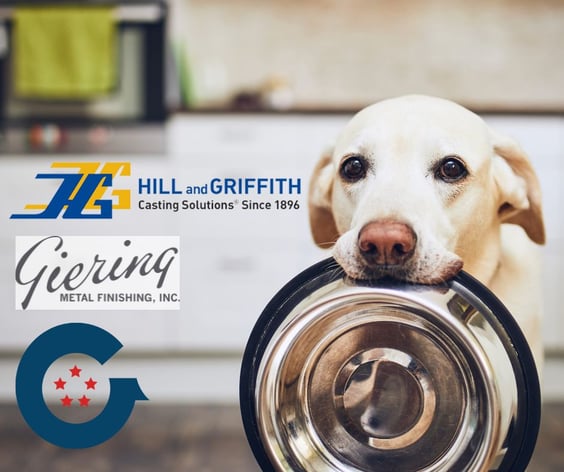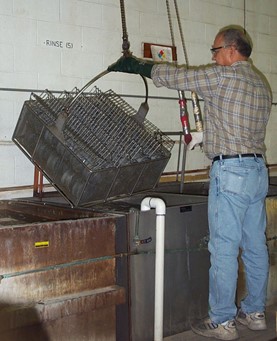
Protecting your casted investment “organically” with multistage cleaning and pretreatment systems
Our last article reviewed the basic science of paint adhesion and the contaminants found in die casting. This release will explain how a multistage cleaning and pretreatment system manages these contaminants to create a flawless cosmetic finish.
All high-pressure die castings will be exposed to these contaminants during production. While it’s the die caster's responsibility to provide a clean, defect-free casting, it is not practical to supply a casting “ready to be painted”. The finisher of the die casting will need to identify these potential contaminants and develop a cleaning and pretreatment process capable of removing them.
The most effective method of cleaning and pretreatment involves a multistage process to clean, etch, pretreat and seal the casting.

Cleaning
Part cleaning is the first important step to proper finishing. Cleaning removes oils, soils & other contaminants from the surface. Cleaning is accomplished using an alkaline or acid cleaner. The aggressiveness of the cleaner is determined by the surface material to be cleaned. Aluminum can be attacked by strong alkaline cleaners. This process is known as smutting and will affect paint adhesion. It is critical that the proper cleaner is selected for the material to be cleaned and the potential contaminants to be removed. pH must be closely monitored to prevent this issue.

Etching
After the cleaning solution is rinsed, an acidic solution is used to remove oxides formed during storage and etch the surface. Etching creates the irregular surface features necessary for mechanical adhesion to be effective. In some cases, acid cleaning agents with surfactants are used in the cleaning stage to remove contaminants and etch the part at the same time.
Pretreatment/Conversion Coating
The cleaning and etching process provides a fresh substrate to deposit a pretreatment. Pretreatment “converts” the surface topography to serve as a rougher, more absorbent foundation for the paint to adhere to. It is often called a “conversion coating” for this reason. Some common pretreatments/conversion coatings are iron phosphate, zinc phosphate, zirconium, and chromate (aka Chem-Film, Iridite, Alodine). Anodize can also be considered a pretreatment for subsequent topcoats.
Sealing
The final rinse in the sequence is typically a non-reactive sealer. Often referred to as the “post-treatment," the sealer is meant to cover over any voids in the converted surface, acting as a barrier layer. Certain sealer rinses contain materials that can be absorbed by the conversion coating providing a bonding linkage to the subsequently applied coating.
Rinsing
The castings are rinsed with water in between each pretreatment stage. It is important that Reverse Osmosis (RO) or Deionized (DI) water is used in final rinses to prevent hard water deposits. Or, if RO or DI is not available, fresh feed circulating water should be used to avoid stagnant water from carrying over contaminants. Recirculated water can be dangerous to a finish, especially if not filtered. Rinses should be monitored for contamination levels (ppm) and drained or dumped regularly to assure cleanliness.
A 5-stage pretreatment process performed by an experienced finisher, like Giering Metal Finishing, is the first critical step in achieving a durable and attractive painted finish.
Subscribe to our blog as we wrap up our “Care and Feeding” series in part 8, where we release the experimental results which reveal once and for all, what is the best way to protect your die casting?

